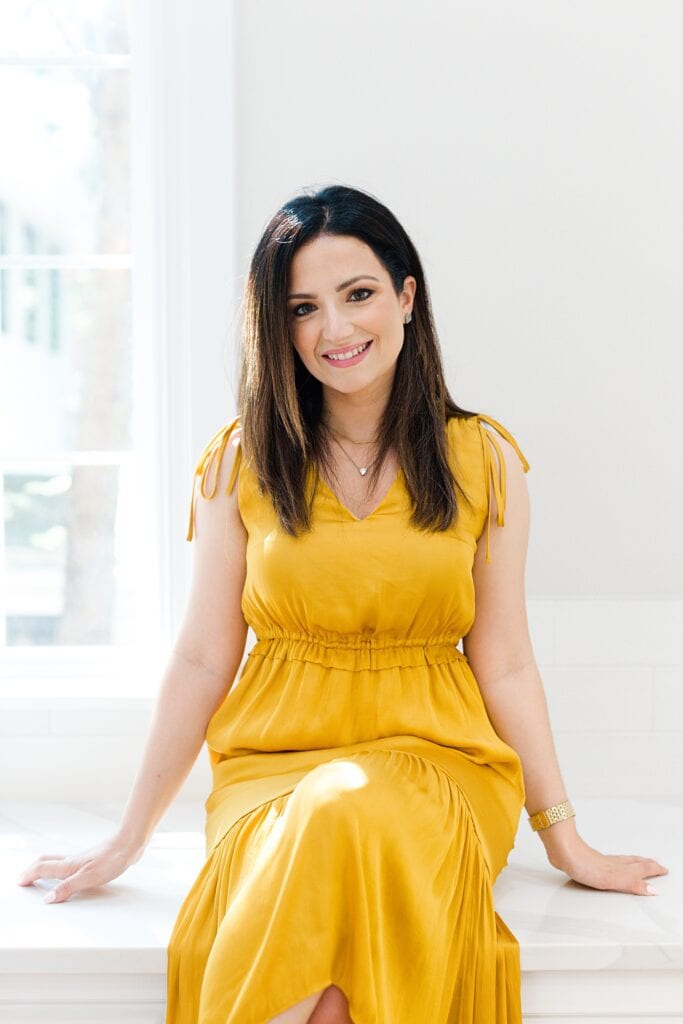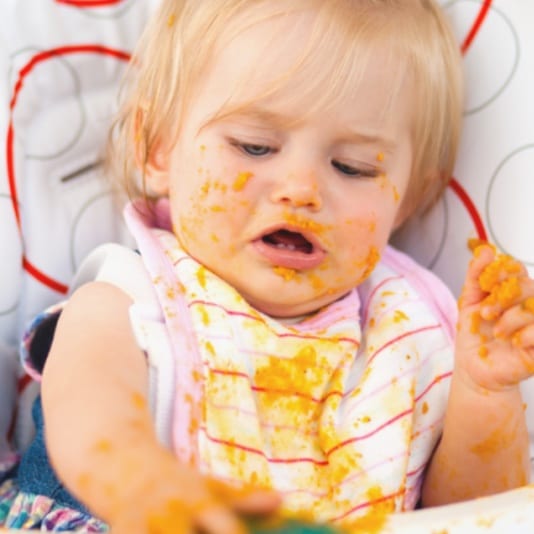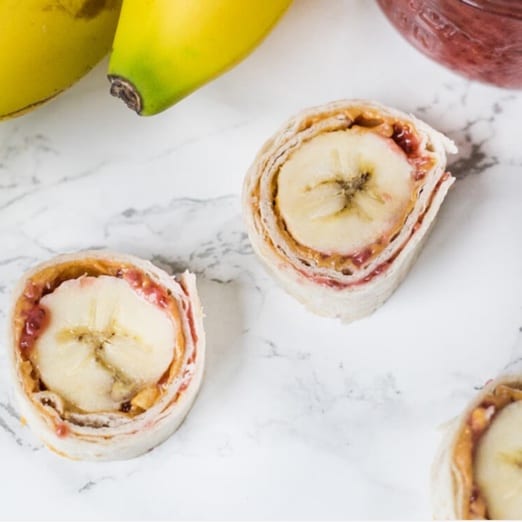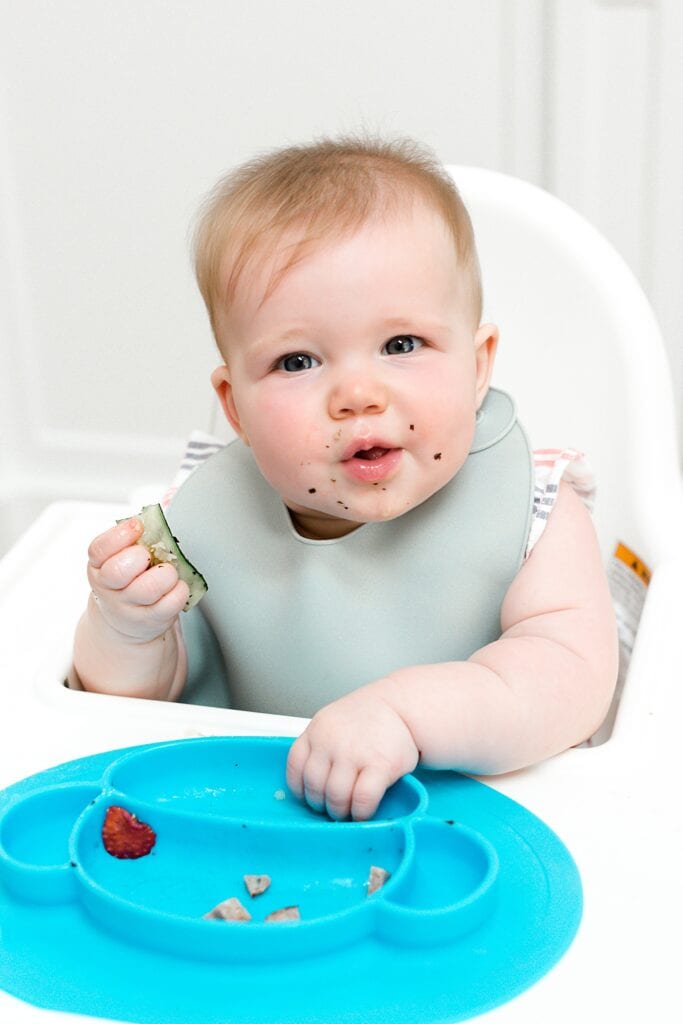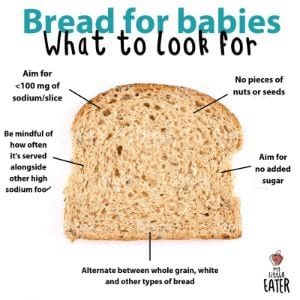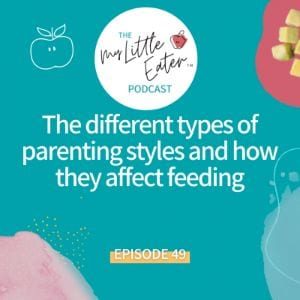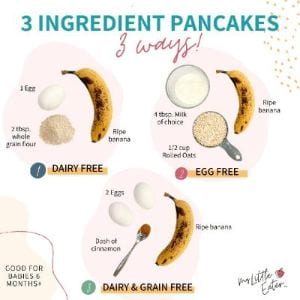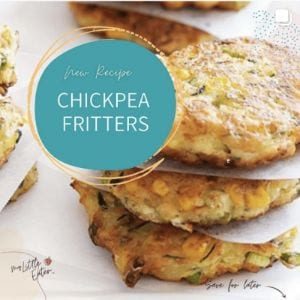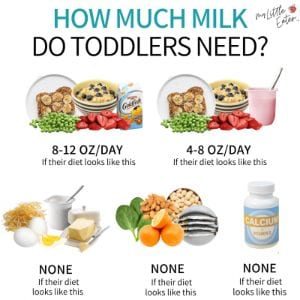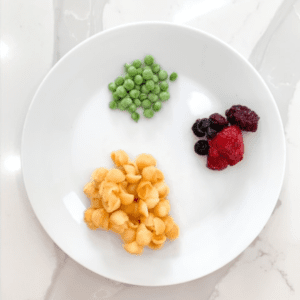
As a parent, making sure our children eat enough food and proper nutrition for growth can be stressful, and many parents often struggle with knowing just how much food is considered the right amount. Parents will often ask me how much their child should be eating…but there simply isn’t an easy answer! When we talk about how much our toddlers should be eating, we often refer to the amount of food in either “servings” or “portions”, thinking these terms mean the same thing. I personally find these terms get used interchangeably, when in fact they shouldn’t be! In our society, portion sizes seem to continue to grow in size, when in reality, serving sizes still remain the same.
Because we’re notorious for mixing up the two, it often leads to us thinking that our toddlers aren’t eating enough, when realistically they likely are! Knowing the difference between the two can help eliminate the expectations we place on our toddler, and help to ease everyone’s stress. Today, I’d like to provide you with clarity regarding the differences between the two and ease your worries around whether your child is eating “enough.” At the end of the day, your toddler should be eating all of the same nutrient dense foods as an adult does, but in portions that are right for them at that specific meal!
Portion sizes vs. Serving sizes

As portion sizes grow, so do our expectations of how much we think our children should eat. Let’s step back a minute and compare what portion sizes are versus serving sizes…how are they different?
A portion size is the amount of a certain food you choose to eat in one sitting. This can vary from person to person (or child to child) and depends on your specific appetite at that time. A portion size for a toddler when they’re hungry at breakfast time could be 1 cup of oatmeal, and when they’re not hungry, it could be just a ¼ cup of oatmeal.
A serving size is considered a measured amount of a food that is used for reference, and is used by health professionals to compare nutrient and calorie amounts from one food to another. There are recommended serving sizes for different types of foods to consume per day (on average), which gives a good estimate on how much food would cover your kid’s nutrient needs.
To give a comparison, 1 pint of berries can typically be eaten in one sitting and could be considered one portion. This actually consists of 2 cups of blueberries, which technically equals two serving sizes for adults.
How much food does your toddler really need?

Typically, a toddler requires between 1000 – 1400 calories per day, but this depends on their age and how active they are. These calories come from various food groups, which provide different nutrients, and so based off of this, the “official” serving sizes for toddlers were created. These provide an idea of how much of each type of food they need in order to meet these requirements.
Usually, toddlers eat three meals and 2-3 snacks per day. Given how small their tummies are at this age, offering smaller meals and snacks throughout the day is often needed as they just can’t eat larger meals like adults can. Offering smaller meals more frequently helps them meet their nutritional needs, and offers them a chance to get enough food throughout the day. Naturally, since they’re eating more frequent meals, the meals they do eat don’t have to be that large, and we can often forget that they can only fit small amounts of food in their little bellies.
One important thing to keep in mind is that although there are many opportunities to feed them throughout the day so they meet their recommended intake, that doesn’t always mean that they’ll take them all! As a parent, you shouldn’t beat yourself up if your kid isn’t eating all of the meals you serve. I would even say it’s extremely common, and expected, that your toddler could leave one meal almost completely untouched per day.
Official serving sizes for toddlers
Here’s a quick outline of the recommended serving sizes for toddlers between the ages of 1 and 3 for each food group.
I never ever think you have to measure out serving sizes…truly it should not be a thing. The only time I recommend doing it is just to see how big a serving size is, and then probably have your jaw drop when you realize that 1/4 cup of fruit is actually not that much at all! Once you’ve got a good visual of what a serving size looks like, just offer food as recommended in the paragraphs below and put those measuring cups away.
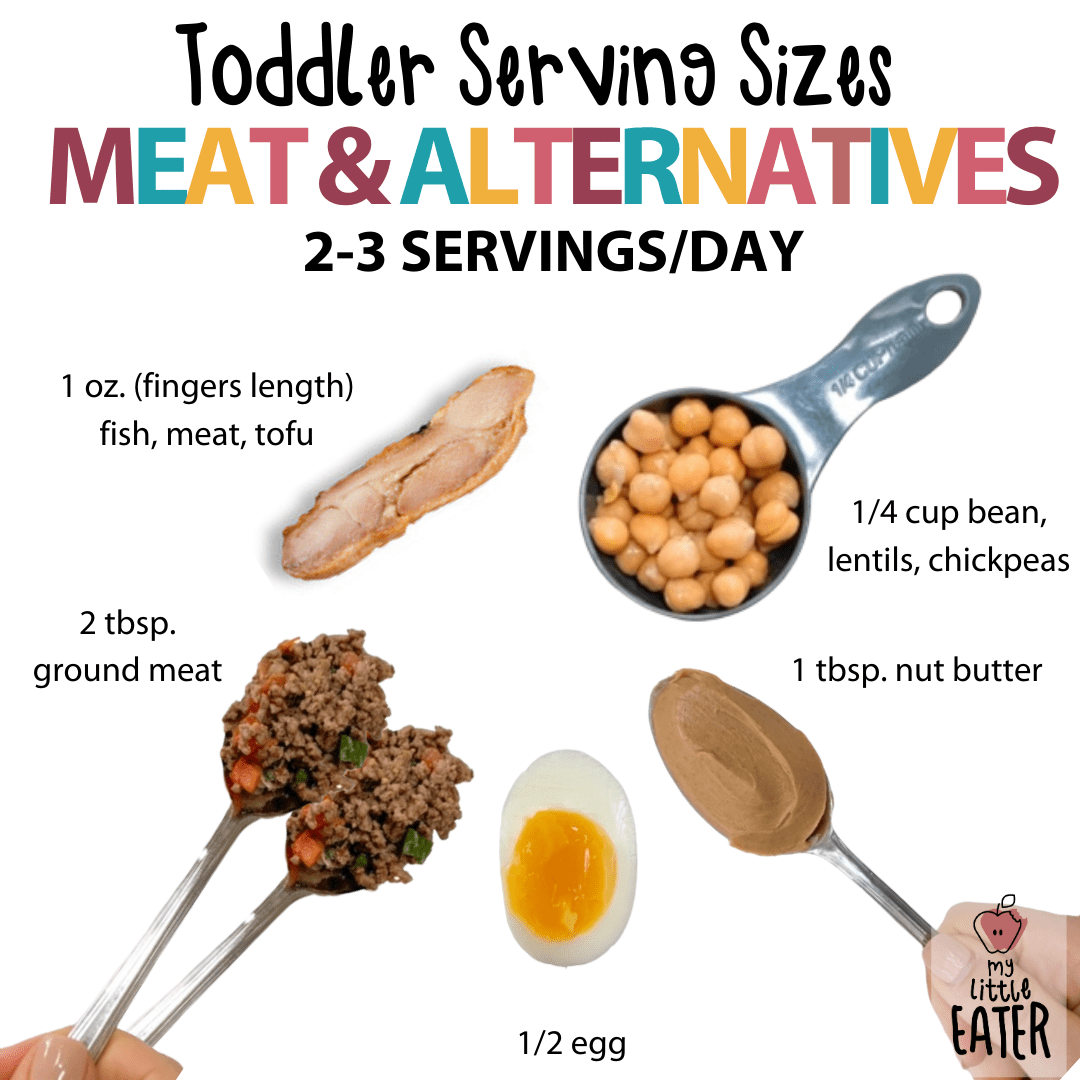
These are only guidelines!
Please keep in mind that these guidelines for recommended serving sizes are simply that…guidelines! Your toddler’s needs may vary slightly from this, and further to that, they very well may not always hit the recommended servings every day, and that is perfectly okay! As parents we tend to expect our toddlers to eat everything they are given solely based on the fact that we think they should. We also tend to overestimate how big these serving sizes should be, and end up serving our toddler too much, only to get discouraged when they don’t eat it all.
When people ask how big or small portions should be for a toddler…I say…as big or small as they want! We want our toddlers to set the rules around how much food they eat (ie. how big of a portion) every meal. I always recommend starting with a small portion of food on their plate so it’s not too overwhelming, and then increasing from there if they want more. But ultimately, if they want to eat tons of something, or just little nibbles of something, I don’t concern myself over this at all. Their appetites at the time dictate this amount, and what’s important is that they are listening to their appetites.
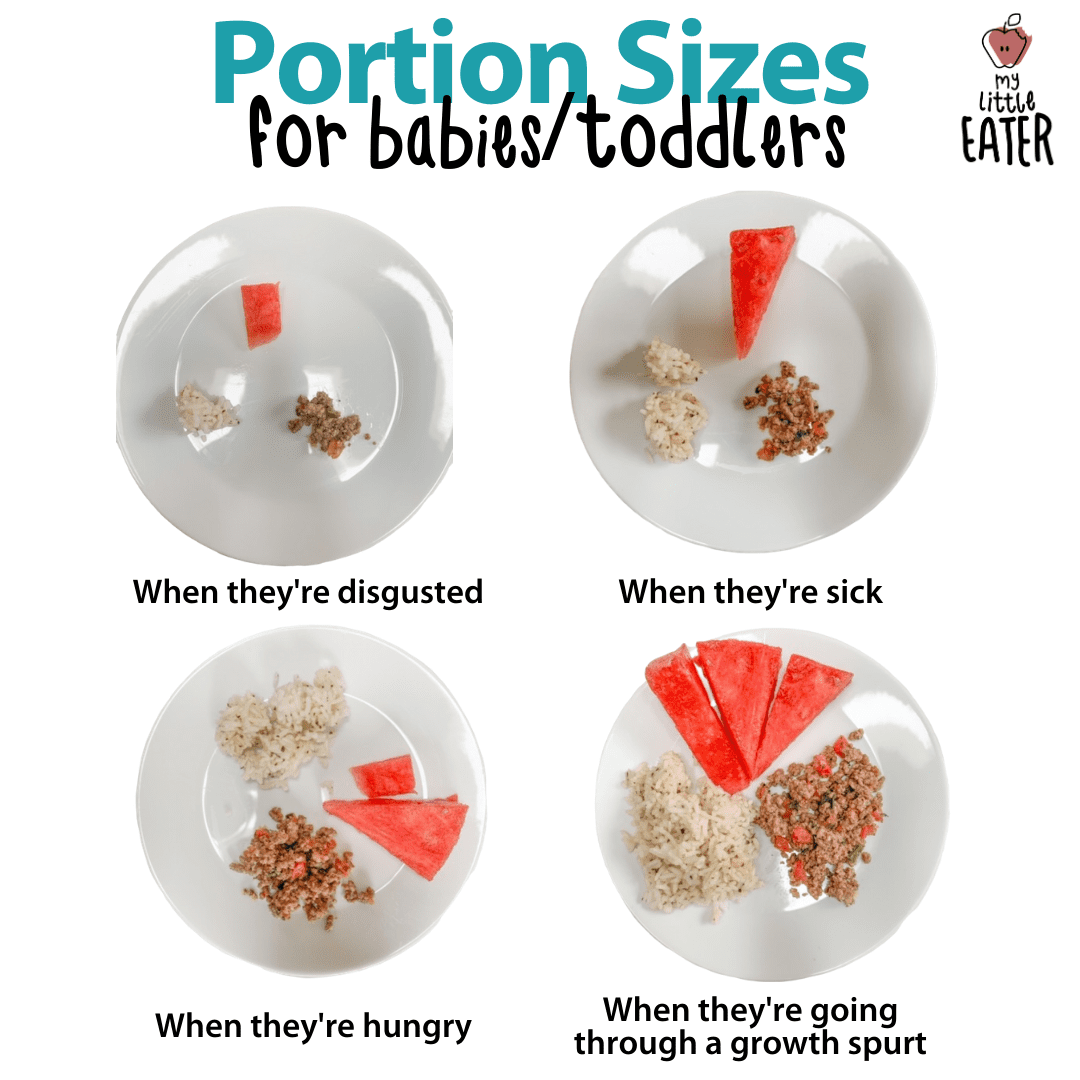
Over time, you will be able to add up the portions of food they’ve consumed, convert it into serving sizes, and get an idea of if they’re at least meeting the recommended number of serving sizes per day. If you’re genuinely stressed that your toddler isn’t getting enough nutrients and servings of food, try tracking servings and food intake over a week instead of day to day. An important thing to remember is that appetite varies day to day and meal to meal. Sometimes they’re just not hungry when a meal is served, they may feel disgusted (it’s okay, this happens and is normal), or are coming down with an illness. A lot of toddlers will under-eat one day, but will compensate the following day by eating more servings to make up for the chances lost the day prior. And vice versa…sometimes they eat tons one day (growth spurt? good mood? favourite foods?), and then over the next few days you may see smaller portions being consumed. At the end of the day, it’s the balance over the span of a week that is much more telling of whether or not intake is sufficient.
Toddlers are the best at self-regulating their hunger, and once we cross the line and tell them, or push them, to eat a certain amount of servings based on recommendations, they tend to lose their instinctual ability to follow their own body’s fullness and hunger cues…and even their interest in foods.
Here’ a great example from my Instagram on how to start small and gradually work your way up to bigger serving sizes. Starting with one tablespoon of each food, and offering more as your toddler feels comfortable increasing their food intake, is a great way to reach adequate serving sizes for your child.
Food guides without serving sizes?
If you’re from Canada, you may be aware of the recent changes made to our food guide, and also noticed the elimination of serving sizes. The USDA also presents a food guide similar to this, which is represented by a segregated plate template known as “MyPlate”. Both of these guides are similar and, overall, promote healthy intuitive eating. The elimination of serving sizes can be confusing for some people, yet liberating for others, because of the freedom to create meals without the expectations of a certain number of servings being included.
This new methodology really urges parents to not worry so much about the guidelines of servings. Focus more on offering healthy food options, having them readily accessible to your child, and promoting a positive eating environment. And although it’s important to have a good idea of serving sizes for your toddler, this corresponds well with my point that they are just guidelines. The bigger picture of overall healthy eating habits is the goal we look to strive towards.
Additional things to think about

Of course as parents it’s natural for you to overthink just about everything you do for your toddler, and making sure they eat enough happens to fall pretty high on the stress list for many. Going by these recommendations can also help eating become less stressful as our toddlers become older children. If you find yourself stressed over if your child is eating the right amounts of food for proper growth, I want you to ask yourself:
- Is your toddler growing well?
- Are they following their growth trajectory chart?
- Are they gaining weight? (remember, toddlers gain about 5 lb/year)
- Do they have regular bowel movements?
If they’re hitting all of this criteria, then relax! Regardless of if they hit all of their “official” number of serving sizes each day or not.
Check out this podcast episode, if you want to learn more about the topic of portions! I hope this blog post has given you some great insight into the difference between serving sizes and portion sizes for toddlers! If you have any questions or feedback about what we’ve discussed, feel free to DM me on Instagram or email us here. We’re always happy to help and answer your questions!
Want to be your own feeding expert at home and feel confident knowing how and what to feed your toddler? I’m here to guide you! My Feeding Toddlers online course will give you all of my strategies and covers all of the topics you need to know to raise a healthy, adventurous eater for life!

